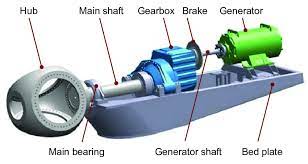New Designs in Wind Turbine Drivetrains to Unlock New Avenues in Offshore Applications
Drivetrains have come to capture intense interest among renewable energy generating countries who have increase their stakes in offshore wind development. Fast emerging markets notably in European Union and North America are seeing the horizon expanding of the wind turbine drivetrains market, underpinned by relentless focus on augmenting the size as well as power of wind turbines. Modern wind turbine technologies are relying increasingly on R&D in drivetrains. More than ever before, stakeholders comprising mainly manufacturers, operators, owners, and researchers in the wind turbine industry have increased their focus on new drivetrain configurations. Indeed, taller wind turbine towers and rise in wind tower capacities underpin spurt of opportunities for firms in the wind turbine drivetrains market.
Stridently, the rise in research funding on developing modern wind turbines in offshore applications has benefitted from advancements in wind turbine drivetrains to anchor development in lightweight wind turbine generators. State-of-the-art of drivetrain technology indisputably heralds a new era of wind power generation.
Advancements in floating offshore wind platforms has spurred design trends and developments in wind turbine drivetrains. Of note, premature failures of drivetrains are one of the most compelling concerns in offshore wind turbines. Specifically, failure in gearboxes—a key component of drivetrains—has oftentimes caused glaring loss of resources in repairs and downtime. The shift from land-based to offshore projects has added impetus to developments in this direction increasingly in the U.S. and European Union.
What Fuels Research & Development of Powerful Wind Turbines?
Over the past few years, industry players with support from government R&D funding are looking more keenly on decommissioning projects. Specifically, producers are focusing on achieving lifetime extension. All these trends are driving the need for better drivetrains in terms of performance as well as maintenance aspects.
The trend of building giant and more efficient wind turbines has gained momentum with governments in several countries across the world racing to augment the capacities of renewable energy. This has brought dozens of drivetrain designs that make wind turbine generators smaller, compact, and yet powerful. Stridently, there is vast scope of wind turbine drivetrains for land-based tall wind and offshore applications, expanding the outlook of the wind turbine drivetrains market.
Funding Projects Galore
Advanced gearbox designs are crucial the development of powerful wind turbines. In this regard, direct drive lightweight generators are gaining attention among wind turbine researchers.
Get a glimpse of the in-depth analysis through our Report Brochure
A number of projects have cropped up with colossal grants by governments in some nations. The U.S. Department of Energy (DOE) is a case in point. The government agency has announced to select and reward projects that are developing state-of-the art wind turbine drivetrain technologies. One approach is to replace high-temperature superconductor (HTS) materials with permanent magnets in the generator rotor. Amazingly, this could help reduce the weight of the wind turbine by 50%. Additionally, such wind turbine drivetrains may lead to cost reduction of wind generation by as much as 10%.
A case in point is General Electric Company developing prototypes of powerful wind turbines and testing them in specialized simulated environments. The scope of commercialization of wind turbines with advanced drivetrains is high in tall wind and offshore applications, thereby enriching the outlook of the wind turbine drivetrains market.
Stakeholders in the renewable energy sector are expected to reap large revenue gains by installing efficient wind turbine drivetrains. Reducing the weight as well as complexity eliminated the need for specialized equipment for transportation and installation. Companies—turbine manufacturers and energy companies—looking for economies of scale are expected to leverage the trend of drivetrain advancements in a bid to build powerful and compact wind turbines.





























